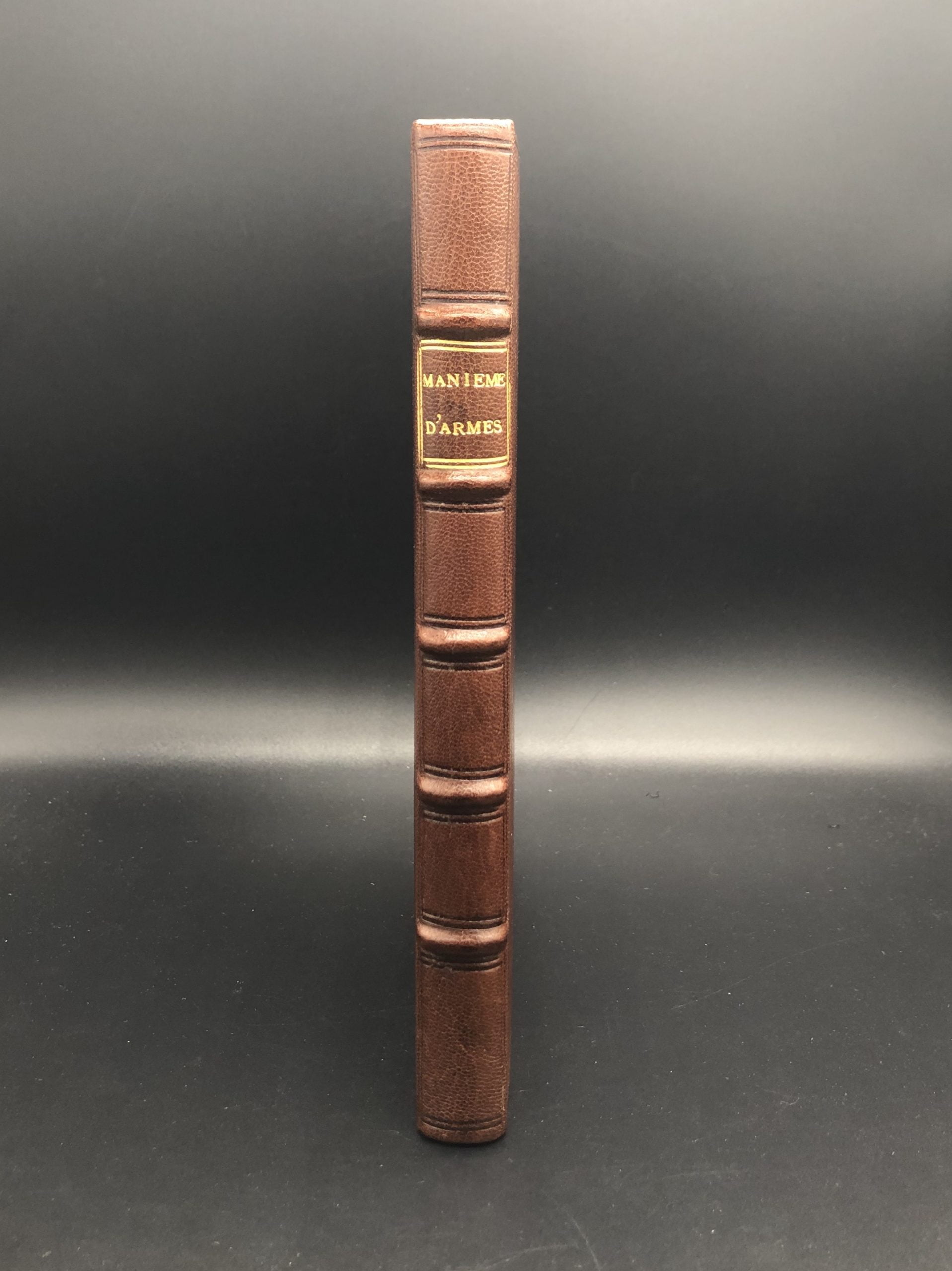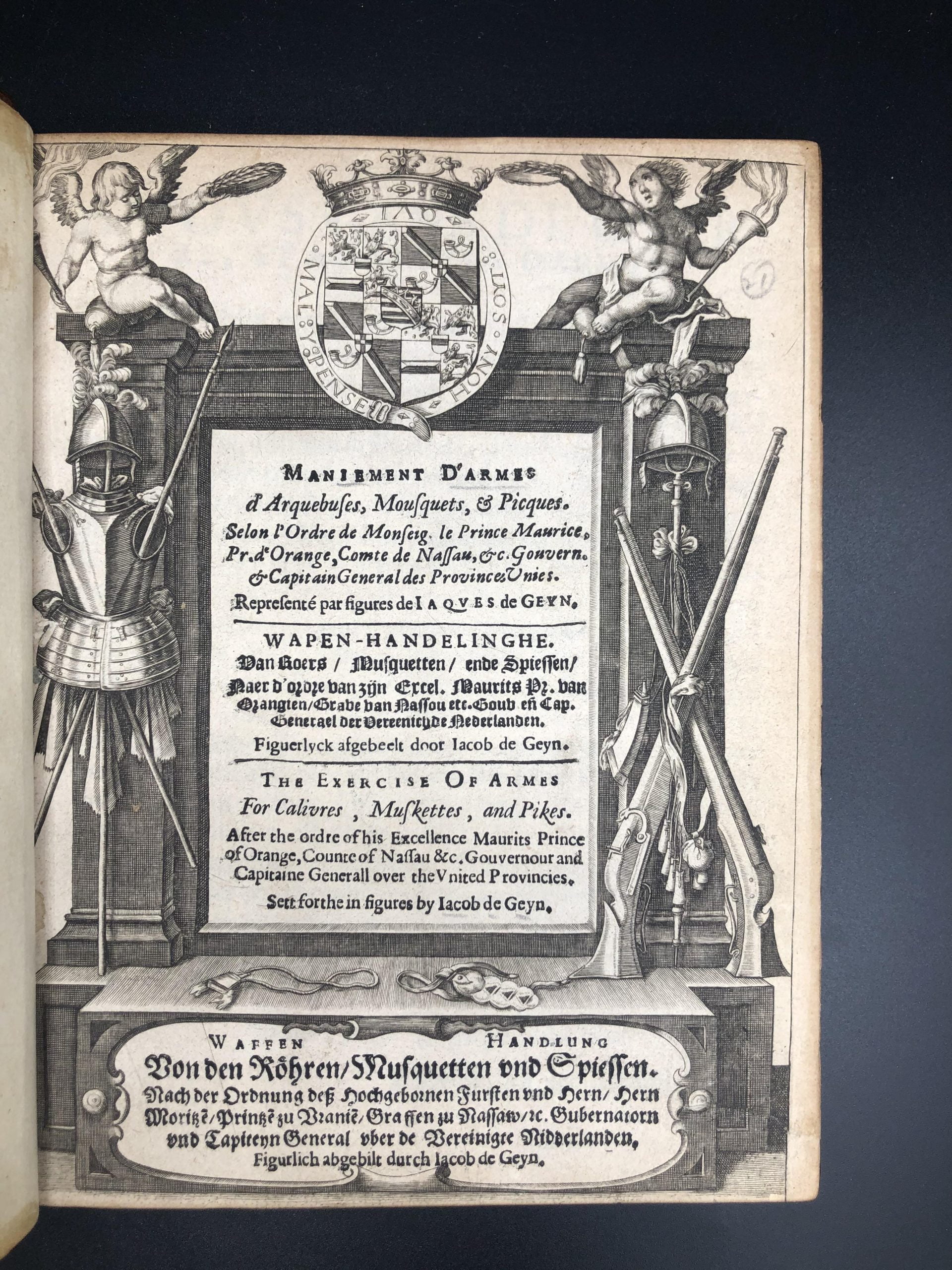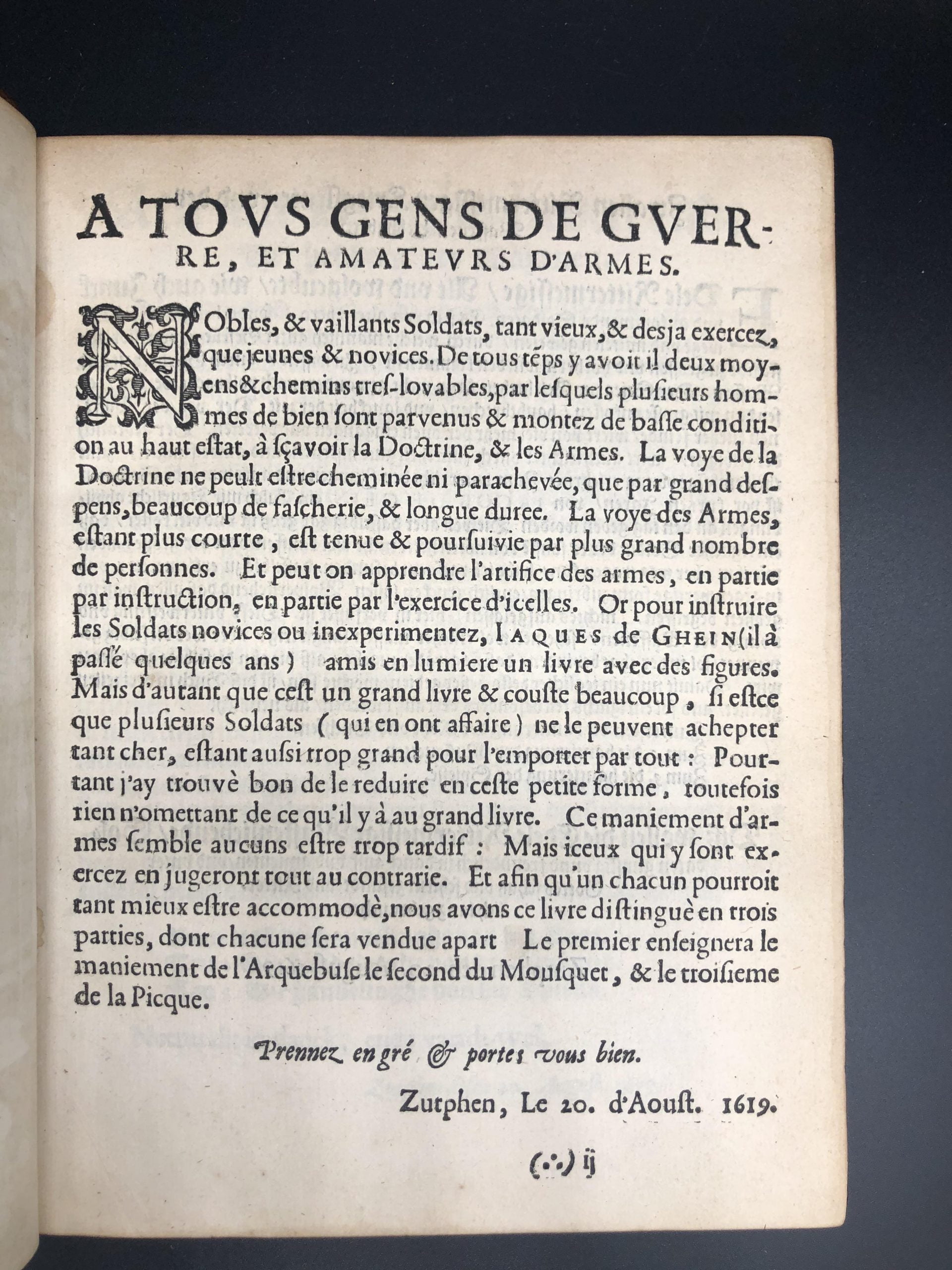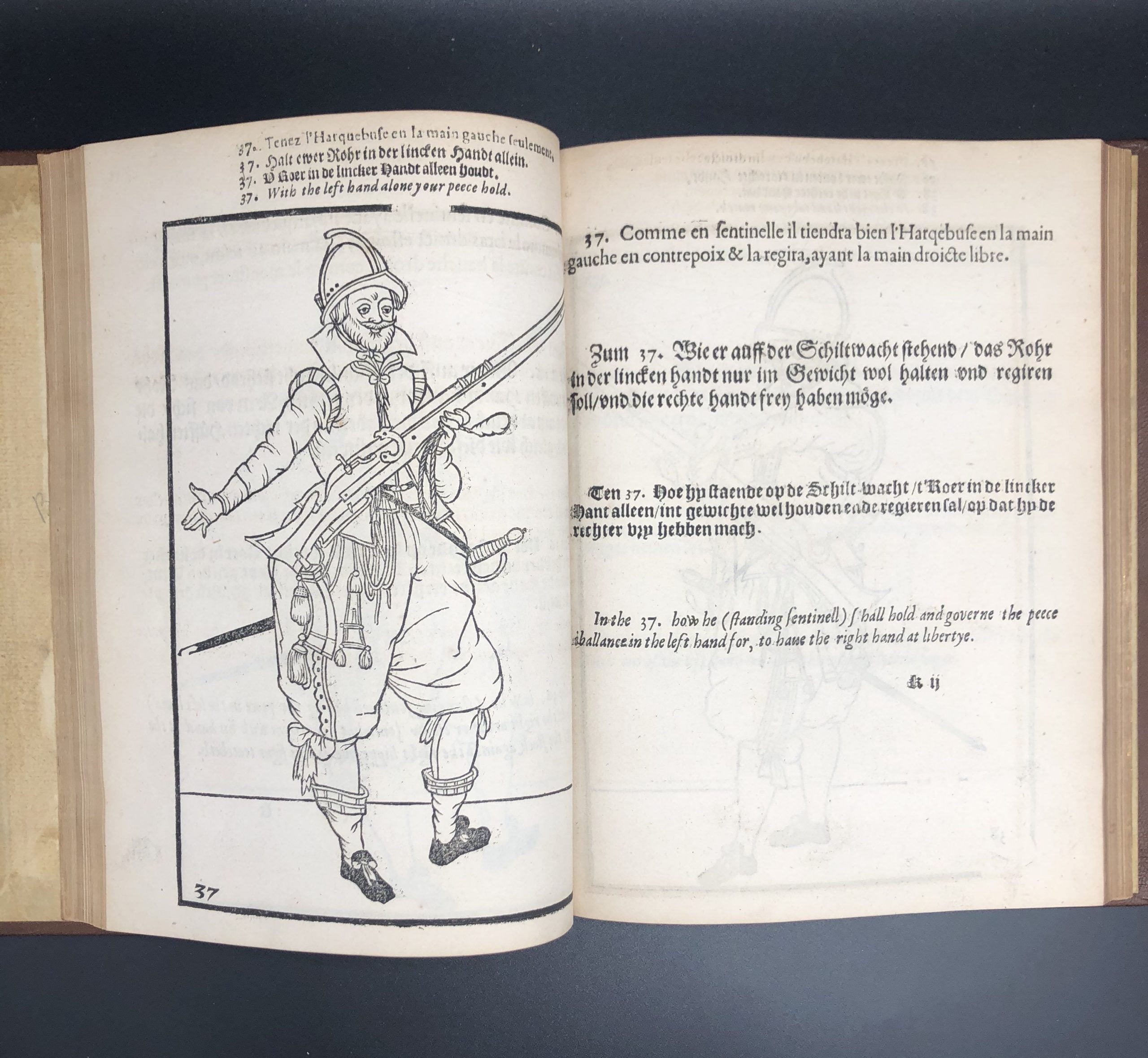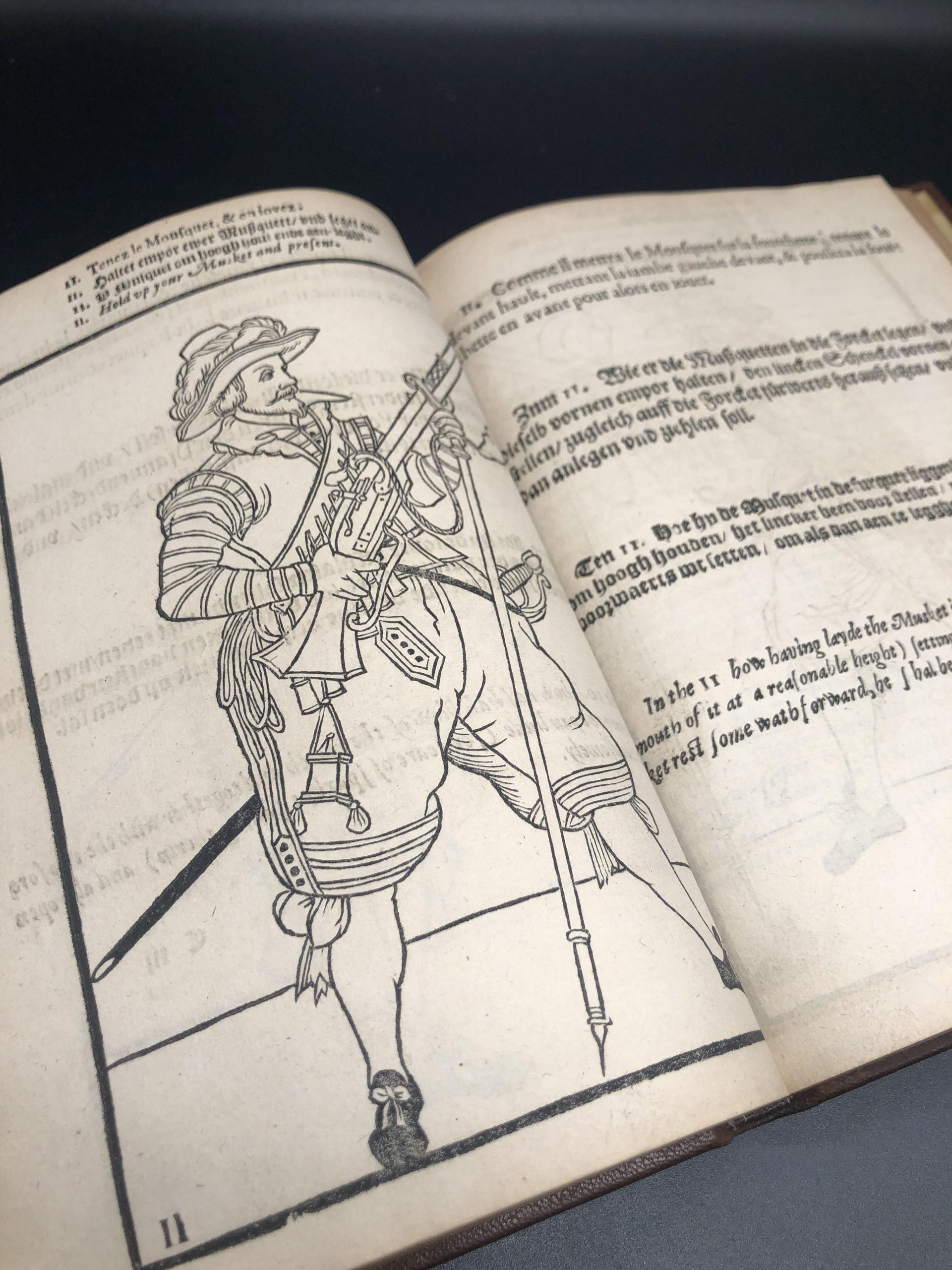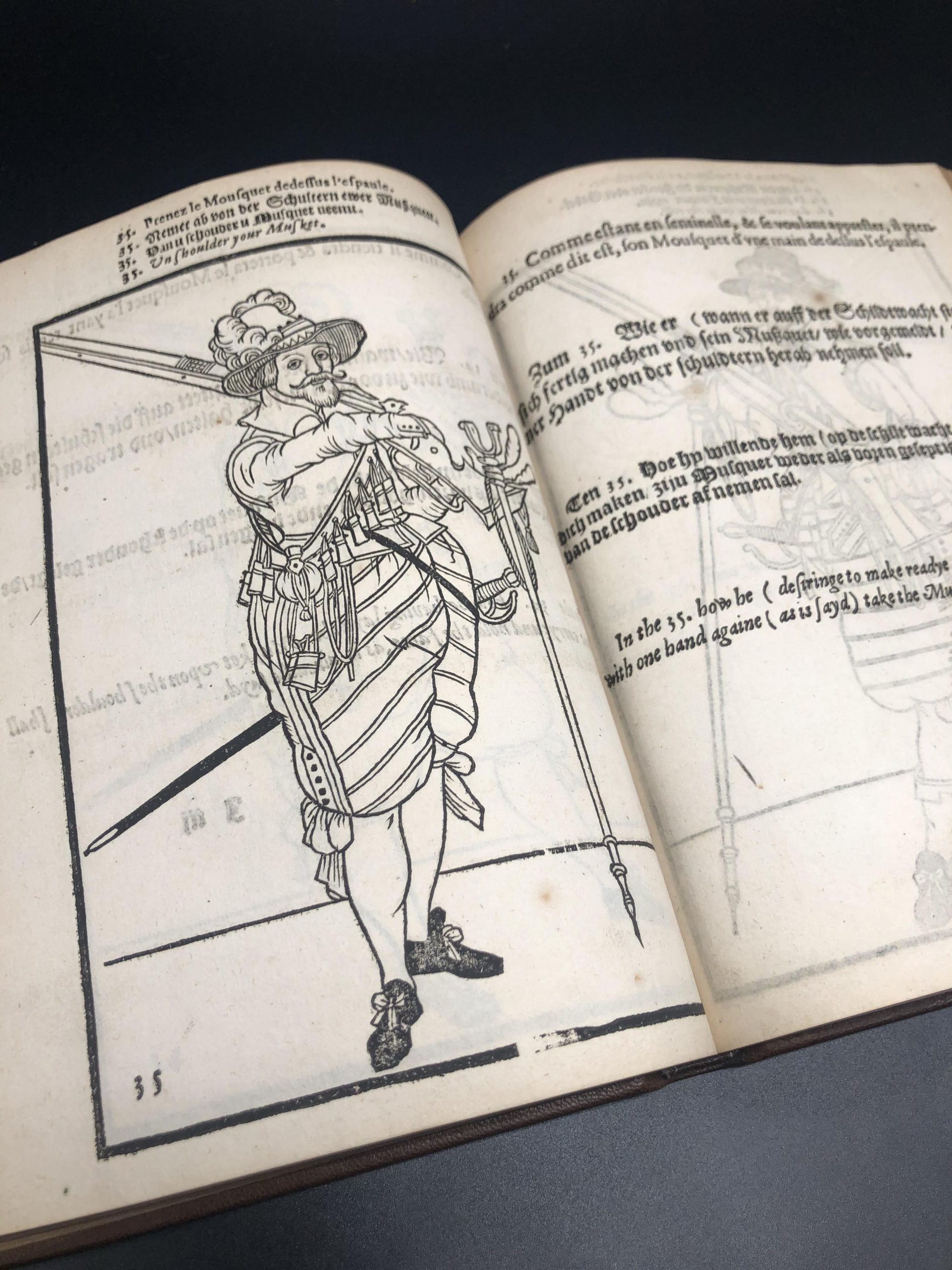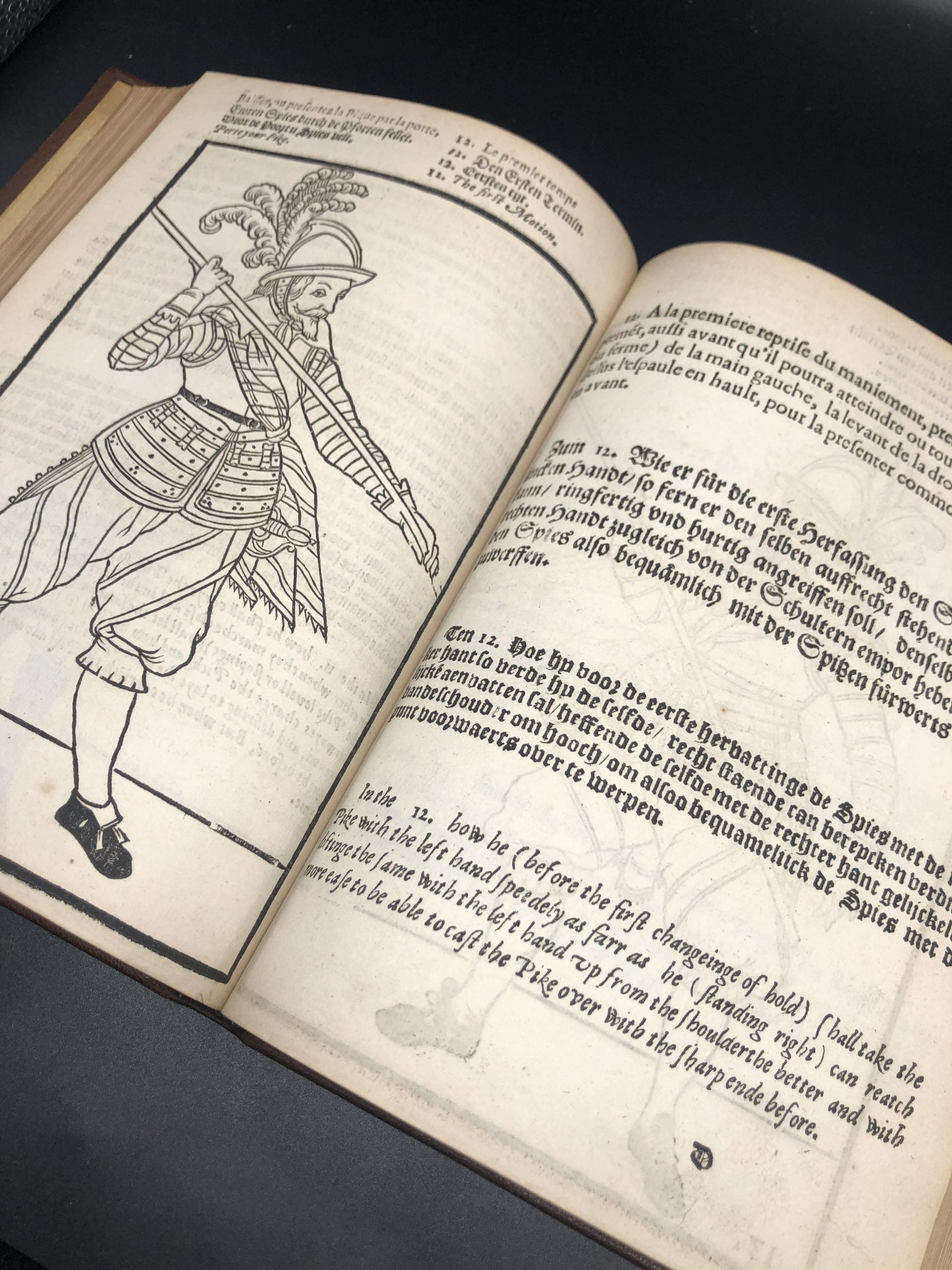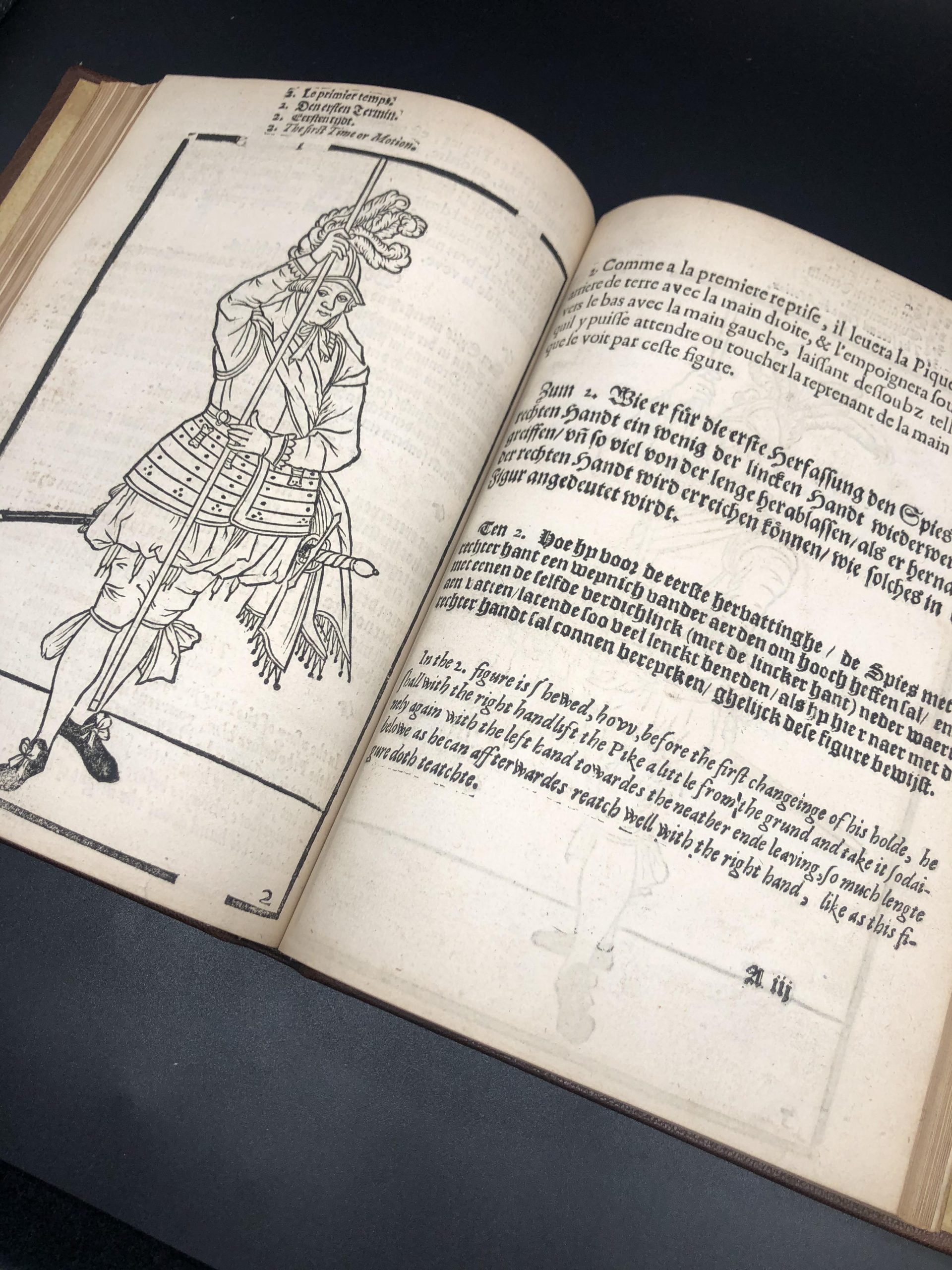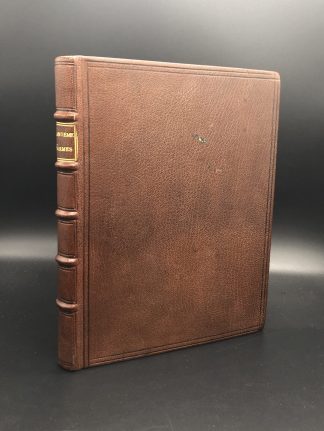GHEYN, Jacob de
Maniement d’armes d’arquebuses, mousquets, & picques … Wapen-handelinghe. Van roers, musquetten, ende spiessen, … The exercise of armes
Zutphen, chez Andre Ianssen d’Aelst, [1620]£12,500.00
4to. pp [252]. (. ) , A-L , (L4 blank); ²A-²L ; ³A-³H ³I² (-³I2 blank). Roman Black and Italic letter. Fine engraved title in French, Dutch, English and German, coat of arms and muskets at sides, putti with arms of Maurice Prince of Orange above, parallel text in the same four languages, preface dated 20 August 1619, 117 fine full-page woodcuts of musket and pike drills. Light age yellowing, very rare marginal mark, margins a bit narrow. A very good, clean copy in modern brown morocco by Bernard Middleton, covers bordered with a double blind rule, a.e.g.
Very rare “compact edition, in three parts of [Jacob de Gheyn’s] Wapen-handelinghe van roers, musquetten, en spiessen” ESTC. In this edition the engravings have been very finely reworked from the original as woodcuts, and the text is in French, Dutch, German and English. The work has a complex publishing history, with various Dutch, German, English, French and Danish editions appearing in Amsterdam and The Hague from 1607. Jacob de Gheyn’s ‘Exercise of Armes’ was an immense success. It is a fascinating seventeenth-century military manual, designed to instruct contemporary soldiers how to handle arms effectively, and correctly, and it makes for a unique glimpse into warfare as waged in the Thirty Years and the English Civil Wars. The manual uses illustrations to clearly demonstrate drills for soldiers employing calivers and muskets. It shows how to load and fire, or merely carry, a matchlock piece. In addition detailed illustrations show the various movements and postures to be adopted during use of the pike. There are 117 very fine woodcut illustrations. Gheyn’s famous illustrated work was designed specifically for practical use on the muster ground. As well as profoundly changing military practice in Europe, the book also provided motifs for several kinds of decorative art. The Delft factories produced a series of tiles based on the engravings and at Clifton Hall in Nottinghamshire the designs were used for paintings on the panelling. Johann II, Count of Nassau-Siegen is often seen as the moving spirit behind the work. Resident in the Netherlands between 1592 and 1597 he took part in the military campaign against Spain and recorded his observations in his so-called ‘Kriegsbuch’. In this, he concluded that arms drill as well as field drill were necessary for cavalry and infantry in the Dutch army, and conceived the idea of publishing an exercise manual for soldiers. An illustrated manuscript version of this work can be found in the Royal Library at The Hague, and it seems likely that this formed the basis for Gheyn’s work. De Gheyn was an engraver by trade, having studied under Hendrik Goltzius whose engravings of Dutch officers in the 1580s probably influenced this work. “This edition in quarto is a much rarer book than the large folio published at the Hague in 1608, with copper-plate engravings. The reason is, no doubt, that this was intended for the use of the common soldiers” (Huth catalogue) who would have found the larger folio editions beyond their economic means as well as too bulky to carry.
This edition is extremely rare: ESTC records three copies only (British Library, Ministry of Defence, and Bodleian).
Cockle p. 65. ESTC S92680. STC 11812.5.In stock



